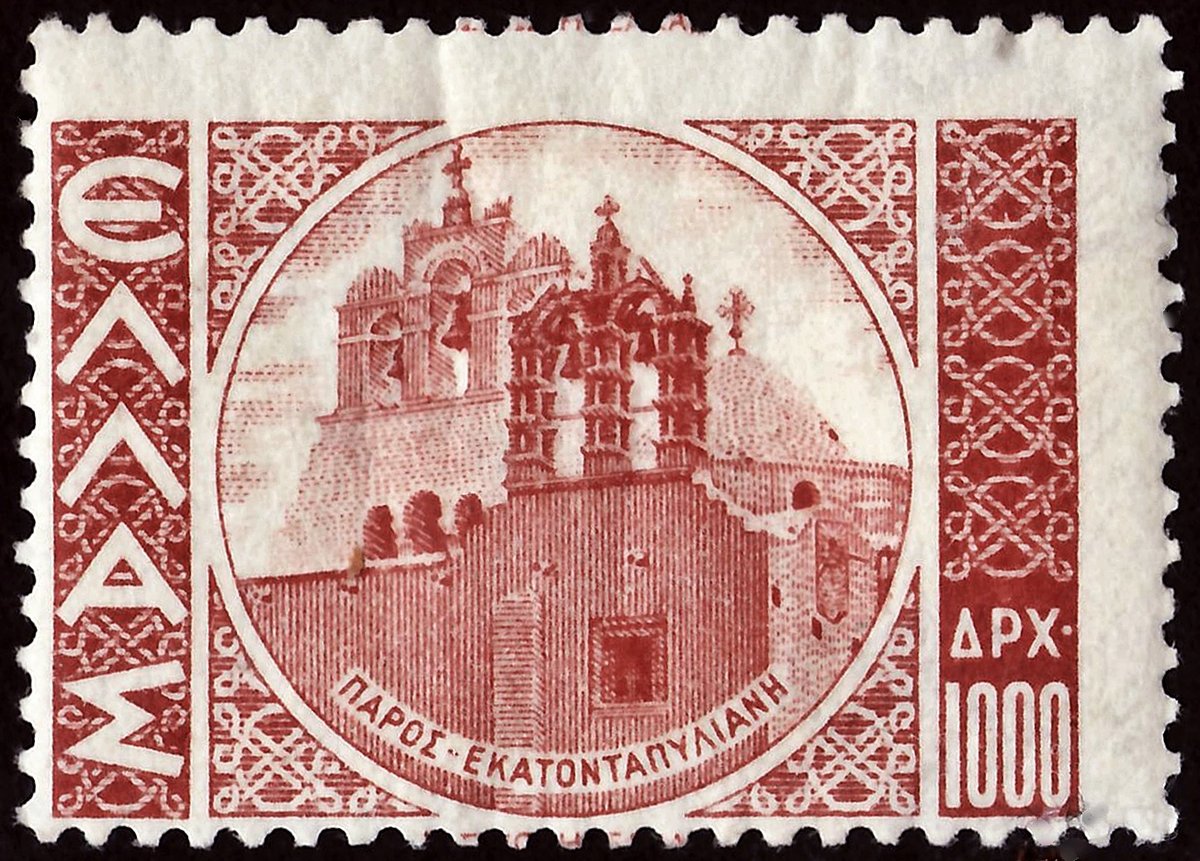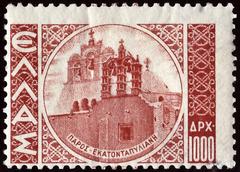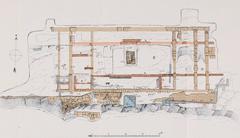
Visiting Panagia Ekatontapyliani in Paros: Tickets, Hours, and Tips
Date: 18/07/2024
Introduction
Table of Contents
- Introduction
- Historical Significance and Overview
- Visitor Information
- A Symbol of Faith and Endurance
- Practical Information for Visitors
- FAQ
- Conclusion
Historical Significance and Overview
Early Beginnings and Byzantine Influence
Panagia Ekatontapiliani’s origins are shrouded in legend, with two prominent narratives intertwining with its foundation. One attributes its construction to Saint Helen, mother of Constantine the Great, during her pilgrimage to the Holy Land in the 4th century AD. She supposedly vowed to build a magnificent church dedicated to the Virgin Mary if she found the True Cross. Upon her successful return, she entrusted the task to her architects. Another legend links the church to Constantine the Great himself. It suggests that he ordered its construction, fulfilling his mother’s vow after her death. This narrative highlights the church’s importance within the early Byzantine Empire and its close ties to the imperial family.
Architectural Evolution and Transformations
The initial basilica, likely built in the mid-4th century AD, differed significantly from the structure seen today. Archaeological evidence suggests a typical Roman basilica layout with a wooden roof. However, during the reign of Emperor Justinian I in the 6th century AD, the church underwent a significant transformation. Justinian, known for his ambitious building projects, commissioned the renowned architect Isidore of Miletus, also responsible for the Hagia Sophia in Constantinople, to rebuild and expand the church. Isidore’s work bestowed upon Ekatontapiliani its characteristic Byzantine architectural elements. The wooden roof was replaced with a magnificent dome, while intricate mosaics and marble decorations adorned the interior. This period marked the church’s elevation to a significant pilgrimage site, attracting worshippers and visitors from across the Byzantine world.
Facing Destruction and Embracing Renewal
The church’s journey through history wasn’t without its tribulations. Over the centuries, Ekatontapiliani faced numerous threats, from earthquakes and fires to pirate raids and conquests. These events left their mark, necessitating periods of reconstruction and repair. Following the fall of Constantinople in 1453, Paros fell under Ottoman rule. While the church remained active, it suffered from neglect and repurposing. Some sections were converted for other uses, and its artistic treasures faced the risk of destruction or looting. The church experienced a revival after Greek independence in the 19th century. Restoration efforts commenced, aiming to restore Ekatontapiliani to its former glory. These efforts continue to this day, ensuring the preservation of this architectural and historical treasure.
Visitor Information
Panagia Ekatontapiliani Visiting Hours
The church is open to visitors daily, typically from 8:00 AM to 8:00 PM. However, visiting hours may vary depending on religious events and seasons. It’s advisable to check the official website or contact the church directly for the most current information.
Panagia Ekatontapiliani Tickets
Entrance to Panagia Ekatontapiliani is generally free, but donations are appreciated to help with the church’s maintenance and restoration efforts. Special guided tours may have associated costs, so it’s best to inquire in advance.
Travel Tips
- Getting There: Panagia Ekatontapiliani is located in Parikia, the capital of Paros. It is easily accessible by foot from the main port. Local buses and taxis are also available.
- Best Time to Visit: The best time to visit is during the early morning or late afternoon to avoid crowds and enjoy the serene ambiance of the church.
- Nearby Attractions: While in Parikia, explore other historical sites such as the Archaeological Museum of Paros and the ancient cemetery. The picturesque streets of Parikia are perfect for a leisurely stroll.
- Photography Tips: The church’s intricate mosaics and marble decorations offer excellent photographic opportunities. Respect the sanctity of the place and avoid using flash inside the church.
- Accessibility: The church is accessible to visitors with mobility issues, but some sections may have steps or uneven surfaces.
A Symbol of Faith and Endurance
Today, Panagia Ekatontapiliani stands as one of Greece’s most important early Christian monuments. Its historical significance is multifaceted:
- Architectural Marvel: The church showcases the evolution of Byzantine architecture, blending early Christian elements with Justinian’s era grandeur. Its dome, arches, and marble work offer a glimpse into the artistic and engineering prowess of the time.
- Religious Significance: As an active place of worship, Ekatontapiliani remains a vital spiritual center for the Greek Orthodox faith. Its association with Saint Helen and Constantine the Great adds to its sanctity, attracting pilgrims from across Greece and beyond.
- Cultural Heritage: The church’s enduring presence speaks volumes about the resilience of the local community and their dedication to preserving their heritage. It serves as a reminder of Paros’ rich history and its place within the broader narrative of Greece’s cultural evolution.
Practical Information for Visitors
Dress Code and Etiquette
As with all religious sites in Greece, it’s essential to dress respectfully. Ensure your shoulders and knees are covered. It’s advisable to carry a scarf or shawl to drape over yourself if needed.
Exploring the Complex
Allocate sufficient time to fully appreciate the grandeur and historical significance of Panagia Ekatontapiliani. Rushing through will detract from the experience. Consider joining a guided tour to gain deeper insights into the church’s history, architecture, and religious significance. Local guides can provide valuable context and anecdotes.
FAQ
What are the visiting hours for Panagia Ekatontapiliani?
The church is open daily from 8:00 AM to 8:00 PM, but it’s best to check for any changes due to religious events.
How much do tickets cost for Panagia Ekatontapiliani?
Entrance is generally free, though donations are appreciated. Special guided tours may have associated costs.
Are there any nearby attractions?
Yes, nearby attractions include the Archaeological Museum of Paros and the ancient cemetery in Parikia.

